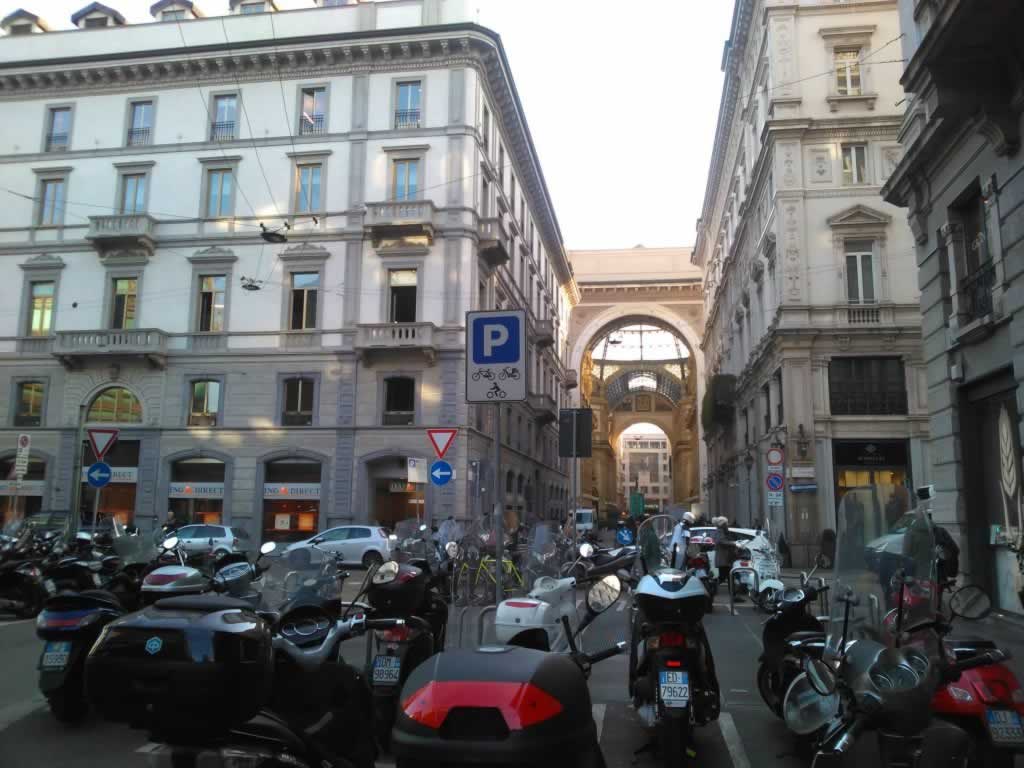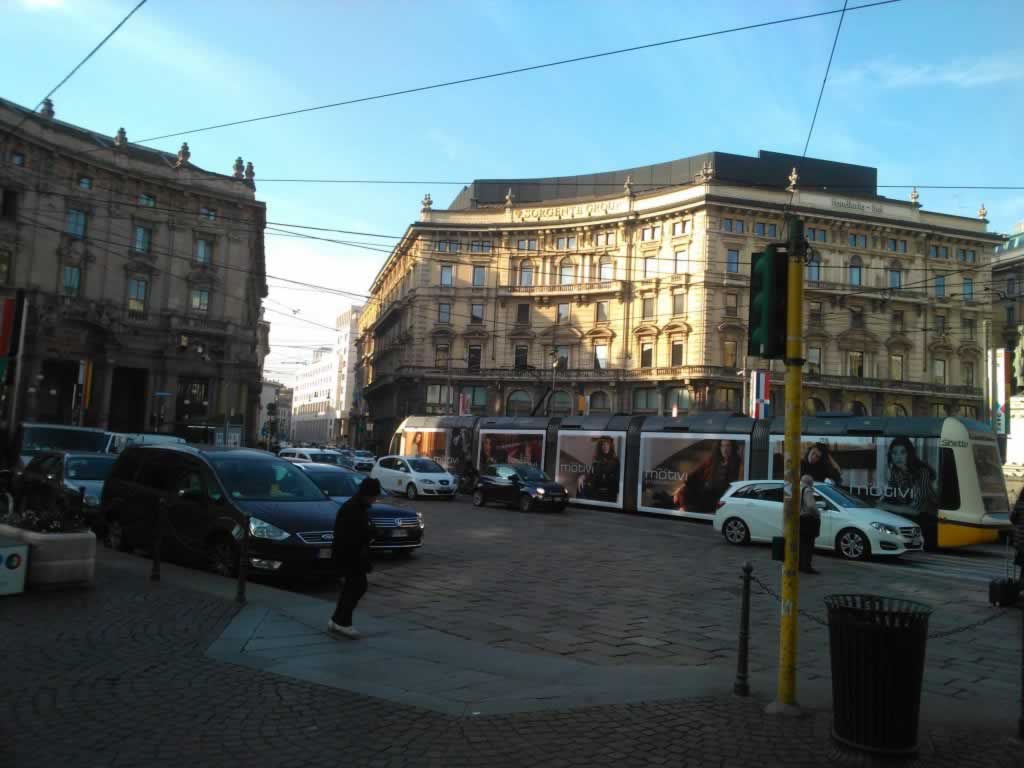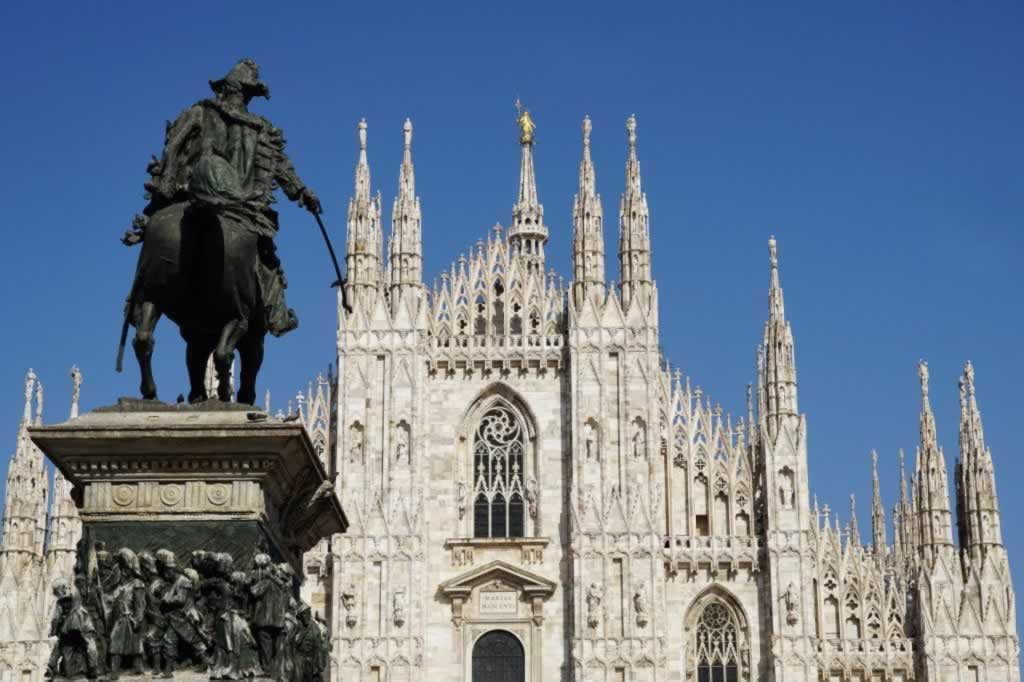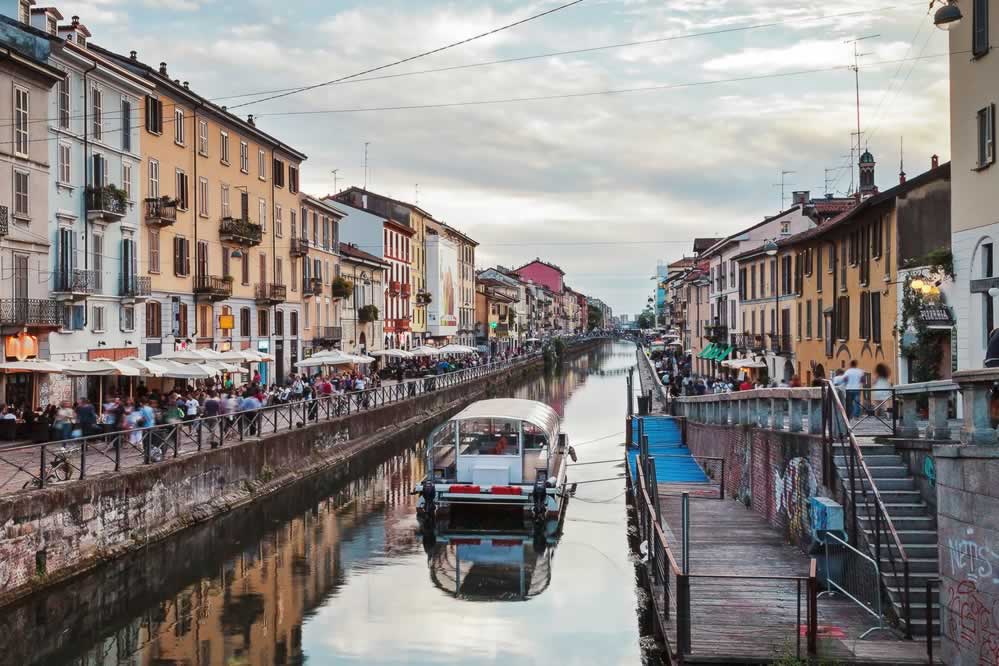Last Updated on: 29th August 2023, 07:43 pm
Milan is one of the most vibrant cities in Italy, renowned for its impressive architecture and for its thriving fashion scene. Like many other cities in Europe, Milan has its good and bad neighborhoods. Even though the city is one of the safest in Italy, it has its less desirable areas, neighborhoods you’d best avoid.
When it comes to finding the perfect neighborhood in Milan, it’s essential to consider various factors that can greatly impact your living or visiting experience. If you’re seeking for a new home, pick a hotel in the central area and go on a self guided walking tour of the city. If you need tourist accommodation, check out the distances from hotels on your shortlist to the objectives on your bucket list.
Do you want to know what are the good and bad neighborhoods of Milan, Italy? Let’s see a list of the main areas, with their pros and cons. By the end of the article, you should have a clear picture of the good and bad Milan areas, being therefore able to book the best accommodation for you.
In this comprehensive guide, I’ll explore the good and bad neighborhoods of Milan, helping you make an informed decision when choosing where to stay in this magnificent city.
Main Topics of What Are the Good and Bad Neighborhoods of Milan, Italy?
- The Charm of Milan’s Historic Center (Centro Storico)
- Navigli: Canals, Culture, and Entertainment
- Brera: Art, Culture, and Elegance
- Porta Romana: Modernity and Residential Comfort
- Isola: The Trendy and Up-and-Coming District
- Città Studi: The Academic Hub
- Conclusion: What Are the Good and Bad Neighborhoods of Milan, Italy?
The Charm of Milan’s Historic Center (Centro Storico)
Discovering the Heart of Milan
At the heart of Milan lies its historic center, Centro Storico. This neighborhood is a treasure trove of cultural heritage and iconic landmarks, including the majestic Milan Cathedral (Duomo di Milano), Palazzo Reale, Castello Sforzesco, and the historic shopping arcade, Galleria Vittorio Emanuele II.

Galleria Vittorio Emanuele II is the oldest active shopping gallery and a major landmark of Milan in Italy.

Living in Centro Storico offers a unique experience, with its charming cobblestone streets, beautiful architecture, and a bustling atmosphere.
Fashion aficionados will appreciate living close to the Fashion District, Quadrilatero della Moda, where all big brands in the industry have their stores.
As this is one of the must-visit neighborhoods for travelers, booking a hotel or an apartment in Centro Storico makes sense, at least for first time travelers to Milan.
Pros and Cons of Centro Storico
Staying in Centro Storico means immersing yourself in Milan’s rich history and being surrounded by countless cultural attractions.
However, it’s important to note that this neighborhood can be quite busy and crowded, especially during peak tourist seasons. Additionally, apartments and hotels in the historic center might be limited and come at a higher price tag compared to other areas in Milan.
Best Hotels in Milan’s Centro Storico
Prestige Boutique Aparthotel, in Piazzetta Pattari, right near the Duomo, clean and well connected, without breakfast but with a kitchenette where you have all utensils needed to prepare it yourself.
OD Sweet Duomo Milano Hotel, with its rooftop bar and panoramic terrace overlooking the Duomo cathedral, is among the top preferences of travelers who want to be near the most sought-after tourist attractions in Milan, Italy. This hotel has 24-hour front desk, free wifi, and tea and coffee maker in all rooms.
Rosa Grand Milano, in Piazza Fontana, is another interesting option, with easy access to the Duomo and to the shopping neighborhood. The downsides of this hotel, as mentioned by some of their guests, are the lack of ironing boards and coffee or tea making facilities in the rooms. Also, some guests have complained that parking was expensive.

Exploring Milan’s Bohemian Quarter
One of the most vibrant and artistic neighborhoods in Milan is Navigli. Situated around a series of picturesque canals, Navigli offers a unique blend of history, creativity, and nightlife.
This neighborhood is famous for its lively atmosphere, art galleries, trendy bars, and a variety of restaurants serving delicious Italian cuisine.
Staying in in Navigli allows you to experience the bohemian side of Milan and enjoy the energetic ambiance created by local artists and musicians. The vibrant nightlife and abundance of cultural events make Navigli an attractive neighborhood for young professionals and creatives.If this is what you seek in your travels, pick a hotel in Navigli. You won’t regret it!
On the downside, parking can be challenging, and the lively atmosphere might not suit everyone’s preference for a quiet residential area. If you can’t sleep in noisy environments, you may be better off choosing other neighborhoods in Milan for your stay.
Easylife – this is an apartment with views over Naviglio Grande, the beautiful canal that crosses Milan. It can be a great choice for a romantic getaway. Check out some photos and book your stay here. Keep in mind, though, that this apartment has the bath tub right in the middle of the bedroom, so it may not suit travelers who need a higher level or privacy.
P&D Apartments Darsena, on Via Vigevano, is a sustainable property that features one bedroom, a kitchenette with washing machine, and a bathroom with bidet. It suits couples or solo travelers who care about their environmental impact in the world. The location is close to public transport and the views of the canal are awesome.
Located in Piazza Sant’ Eustorgio, just off Porta Ticinese, Hotel Milano Navigli is only a short tram ride to the Duomo. Click here to check the room rates as of today, [todaysdate] and to book your stay.

Daytime scene along the Naviglio Grande canal in Milan, Italy.
Brera: Art, Culture, and Elegance
Indulging in Milan’s Artistic Haven
For art enthusiasts and those seeking elegance and sophistication, the neighborhood of Brera is an excellent choice. Located near the city center, Brera is famous for its art galleries, antique shops, and narrow streets filled with character.
In Brera you can visit the Botanical Garden, Orto Botanico di Brera, Palazzo Orsini, and the observatory, Osservatorio Astronomico di Brera. The observatory was built in the 18th century.
This picturesque neighborhood also hosts the renowned Pinacoteca di Brera, an art gallery housing an extensive collection of Italian masterpieces.
Pros and Cons of Brera
Living in Brera means having easy access to some of Milan’s finest cultural institutions, including the La Scala opera house and the Brera Academy of Fine Arts. The area is well-connected, with excellent public transportation options.
However, keep in mind that Brera is considered an upscale neighborhood, and housing prices can be higher compared to other districts in Milan.
Staying in Brera as a tourist can be an excellent idea, particularly for art lovers.
Best Hotels in Brera
For a luxury accommodation, without budget restrictions, check out Palazzo Parigi Hotel & Grand Spa.
If you can’t spend thousands per night, you may want to check out Castello Guest House, a beautiful apartment with castle view.
Last but not least, Locanda Pandenus Brera is a great choice in this areas, as it is right by the Mercato Pandenus, where you can taste food cooked by Enrico Bartolini, a famous Michelin-starred chef.
Porta Romana: Modernity and Residential Comfort
Embracing a Modern Lifestyle
Located south of the city center, Porta Romana offers a perfect blend of modernity and residential comfort. This neighborhood has seen significant redevelopment in recent years, resulting in contemporary architecture, fashionable boutiques, and trendy cafés.
Porta Romana provides a more relaxed atmosphere while still being within proximity to Milan’s main attractions.
The Advantages and Disadvantages of Porta Romana
Porta Romana is highly regarded for its modern infrastructure, making it an attractive neighborhood for families and professionals seeking a comfortable living environment.
The area boasts well-maintained parks, excellent schools, and a variety of amenities such as fitness centers and shopping malls. However, it’s worth noting that housing prices in Porta Romana can be higher compared to some other neighborhoods in Milan.
Even though Porta Romana isn’t a bad neighborhood per se, travelers might be better off staying in tourist areas, in order to be near the major objectives to visit in Milan, to shopping malls and trendy restaurants.
Best Hotels in Porta Romana
At 1km from Porta Romana metro station, there’s 10 Keys Milano, a 4-star accommodation that features a hammam, private parking, and 24-hour front desk service.
Also in this neighborhood, check out this Milan Center Apartment Studio, an accommodation with excellent customer ratings and reviews.
There are a few hotels in this neighborhood, as well, but they have slightly lower ratings, so I’m not sure how good they are.
Isola: The Trendy and Up-and-Coming District
Discovering Milan’s Hipster Haven
In recent years, the neighborhood of Isola has undergone a transformation, emerging as one of Milan’s trendiest districts.
Located in the northern part of the city, Isola is characterized by its contemporary architecture, trendy bars, and artistic vibe. The district has attracted a young and creative crowd, drawn to its vibrant atmosphere and innovative urban projects.
Pros and Cons of Isola
Living in Isola offers a unique experience for those seeking a lively and dynamic neighborhood. The area is well-connected through public transportation and provides easy access to the city center.
Isola is also known for its diverse culinary scene, offering a wide range of international cuisines. It can suit food lovers and digital nomads very well.
The main drawback of Isola is that the neighborhood’s popularity has led to an increase in housing and hotel prices, and it may not suit individuals looking for a quiet residential area.
Best Hotels in Isola
Crowne Plaza Milan City is one of my top options when it comes to choosing accommodation in the neighborhood of Isola.
Città Studi: The Academic Hub
A Neighborhood for Knowledge Seekers
Situated in the northeastern part of Milan, Città Studi is renowned for being home to several prestigious universities and academic institutions. The neighborhood attracts a significant student population, creating a vibrant and intellectually stimulating environment. Città Studi is well-connected to the city center and offers a range of affordable housing options, making it an ideal choice for students and young professionals.
The Advantages and Disadvantages of Città Studi
Living in Città Studi provides easy access to top-notch educational institutions, libraries, and research centers. The area is filled with affordable eateries, bars, and recreational facilities catering to the student population.
This neoghborhood of Milan, Italy, may suit digital nomads and budget travelers.
However, it’s important to consider that Città Studi may not offer the same level of luxury or upscale amenities as some other neighborhoods in Milan.
Best Accommodation in Città Studi
Mia Aparthotel, on Via Vallazze, is close to Loreto Metro station and only 5km away from Linate Airport.
Also, check out 21 House of Stories Citta Study, on Via Enrico Noe.
Conclusion: What Are the Good and Bad Neighborhoods of Milan, Italy?
Milan, Italy, offers a diverse range of neighborhoods, each with its own distinct character and charm. Whenever I visit Milan, I usually enjoy walking through various neighborhoods
Whether you prefer the historical allure of Centro Storico, the artistic atmosphere of Brera, the trendy vibe of Navigli and Isola, the modern comforts of Porta Romana, or the academic environment of Città Studi, there is a neighborhood in Milan to suit your preferences.
When choosing a neighborhood, consider factors such as proximity to amenities, transportation links, housing prices, and the overall ambiance that aligns with your lifestyle. Remember to visit different neighborhoods, explore their streets, and get a feel for the atmosphere before making a decision.
By providing this comprehensive guide to the good and bad neighborhoods of Milan, I only wanted to show you that there’s more to Milan, Italy, than its historical center and the Duomo. Modern neighborhoods boast stunningly beautiful buildings, up to par to the old buildings in the center.
- Blue Grotto Malta - April 23, 2024
- Ramla Beach Gozo, Maybe the Best in Malta - April 9, 2024
- Where To Go on Honeymoon: List of the Most Interesting Countries - April 9, 2024

